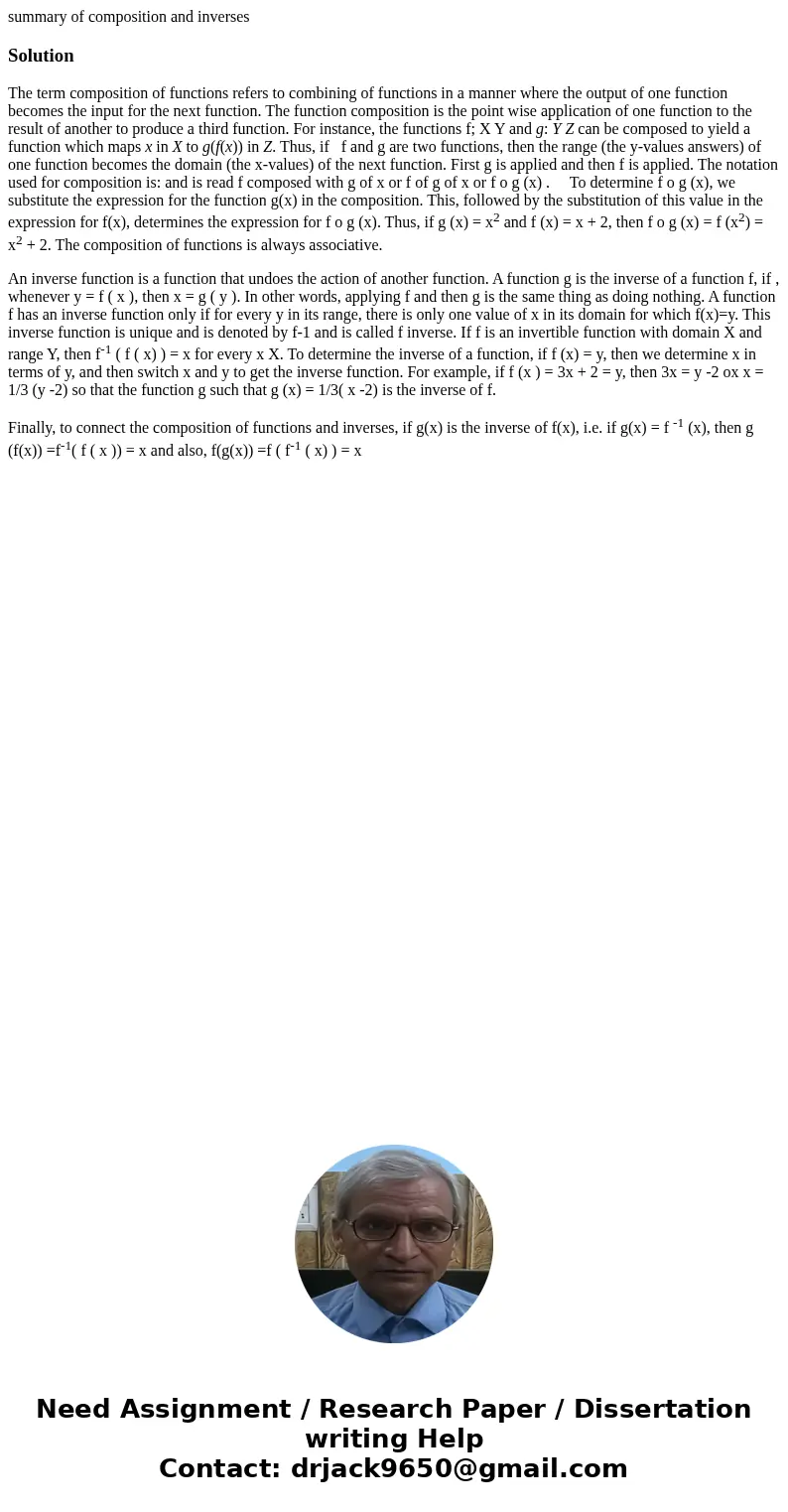summary of composition and inversesSolutionThe term composit
summary of composition and inverses
Solution
The term composition of functions refers to combining of functions in a manner where the output of one function becomes the input for the next function. The function composition is the point wise application of one function to the result of another to produce a third function. For instance, the functions f; X Y and g: Y Z can be composed to yield a function which maps x in X to g(f(x)) in Z. Thus, if f and g are two functions, then the range (the y-values answers) of one function becomes the domain (the x-values) of the next function. First g is applied and then f is applied. The notation used for composition is: and is read f composed with g of x or f of g of x or f o g (x) . To determine f o g (x), we substitute the expression for the function g(x) in the composition. This, followed by the substitution of this value in the expression for f(x), determines the expression for f o g (x). Thus, if g (x) = x2 and f (x) = x + 2, then f o g (x) = f (x2) = x2 + 2. The composition of functions is always associative.
An inverse function is a function that undoes the action of another function. A function g is the inverse of a function f, if , whenever y = f ( x ), then x = g ( y ). In other words, applying f and then g is the same thing as doing nothing. A function f has an inverse function only if for every y in its range, there is only one value of x in its domain for which f(x)=y. This inverse function is unique and is denoted by f-1 and is called f inverse. If f is an invertible function with domain X and range Y, then f-1 ( f ( x) ) = x for every x X. To determine the inverse of a function, if f (x) = y, then we determine x in terms of y, and then switch x and y to get the inverse function. For example, if f (x ) = 3x + 2 = y, then 3x = y -2 ox x = 1/3 (y -2) so that the function g such that g (x) = 1/3( x -2) is the inverse of f.
Finally, to connect the composition of functions and inverses, if g(x) is the inverse of f(x), i.e. if g(x) = f -1 (x), then g (f(x)) =f-1( f ( x )) = x and also, f(g(x)) =f ( f-1 ( x) ) = x

 Homework Sourse
Homework Sourse